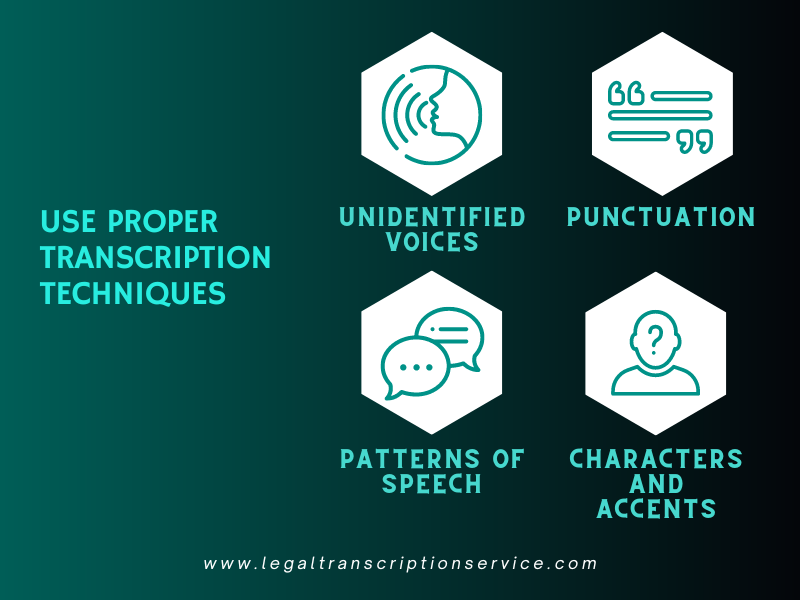
Over the past decade, there has been a significant rise in the number of Americans tuning in to podcasts. According to the “The Infinite Dial” report by Edison Research, as of 2023, 42% of Americans age 12 and above had listened to a podcast in the previous month. That’s good reason to consider podcasting for your business. However, while creating podcasts is easy, attracting listeners is not. Building and growing an audience is crucial for the success of a podcast. That’s where podcast transcription comes in. Including a transcript alongside your recording is vital for enhancing its visibility in search results. Let’s take a look at the benefits of podcast transcripts and strategies that can help you successfully publish your podcast transcript.
Why Transcribe Podcasts?
Podcast transcription plays a key role in enhancing the accessibility, discoverability, and usability of your podcast content.
About 60.7 million Americans age 12 and older are affected by hearing loss and up to 44.1 million of American adults age 20 and older have some level of hearing loss (www.ncoa.org). Transcribing podcast episodes makes the content accessible to this audience. Also, some individuals may prefer or need written text instead of audio. A transcript ensures that everyone can consume the information and engage with the podcast.
By transcribing your podcast, you not only boost its online visibility, enabling a wider audience to discover and enjoy your show, but you also create a highly accessible version of your podcast interviews. Transcriptions provide versatile content that can be used to create blog posts, articles, social media snippets, and even e-books. With a text version readily available, you can revisit specific parts of an episode or extract key information. Transcripts allow listeners to quickly locate and review relevant segments, quotes, or resources mentioned in the podcast. The text content also plays a crucial role in podcast promotion by bridging the gap between search engines and audio content. Since search engines can only index text, having a podcast transcript can make all the difference in whether people can find your podcast online or not. Transcriptions offer versatile content that can greatly enhance different aspects of your podcast promotion strategy.
Read about how podcast transcription can help you discover actionable insights and improve your show.
8 Tips to Publish Podcast Transcripts
To launch a successful podcast, prioritizing the listener is paramount. Your podcast should be designed to take listeners on an engaging and satisfying journey that aligns with their desires. Additionally, it is crucial to ensure that the technical aspects of your podcast are simple and user-friendly for you as well as your listeners.
Here are some tips to help you successfully publish your podcasts:
Define your Show’s Concept and Target Audience
Defining the purpose, content, and target audience of your podcast is crucial for its success. By clearly defining your podcast’s purpose, crafting relevant content, and understanding your target audience, you can effectively engage listeners and make a positive impact.
Create Quality Content
Focus on creating engaging and high-quality content that provides value to your target audience. Choose topics that are relevant and interesting to your target audience. Developing quality content requires consistent research, planning, and creativity to produce compelling episodes that resonate with listeners and keeps them engaged.
Plan Your Episodes
Create a content calendar to plan your podcast episodes in advance. Planning the structure and flow of each episode helps you stay organized and ensures a consistent schedule of releases. Develop a well-structured outline or script to guide your conversation. Consider incorporating diverse elements such as segments, interviews, storytelling techniques, and interactive elements. This can ensure that your podcast episodes are cohesive, well-paced, engaging, and impactful, ultimately enhancing the overall listening experience for your audience.
Use Proper Transcription Techniques
When transcribing dialogue, follow the standard format: name, colon, dialogue. This ensures clarity and ease of understanding, regardless of the length of the response.
- Unidentified Voices: To avoid confusion, introduce new speakers promptly with their names. If a speaker’s identity is not immediately clear, use descriptors like “worker” until formally introduced. Maintain a line break between each speaker to aid comprehension.
- Punctuation: Maintain proper grammar and punctuation to facilitate readability. Unless intentional for stylistic purposes, ensure smooth flow and coherence for your audience.
- Patterns of Speech: Retain unique speech patterns, such as stammering or false starts, as they contribute to the authenticity of the conversation. These nuances enhance the transcription’s ambiance and reflect the natural cadence of your show.
- Characters and Accents: If your podcast features recurring characters or accents, indicate them in the transcription. This helps readers follow along and immerse themselves in the narrative. Separate each character or accent with a line break for clarity.
With these transcription techniques in mind, consider where to publish your polished transcript for maximum impact.
Post Podcast Transcripts for Maximum Visibility
Maximize the reach of your podcast transcripts by sharing them across various platforms. Submit your podcast to popular podcast directories such as Apple Podcasts, Spotify, Google Podcasts, and Stitcher. This increases your visibility and makes it easier for listeners to find and subscribe to your podcast. Follow their submission guidelines to ensure your podcast is listed correctly.
Here are some other effective distribution strategies:
- Social media groups: Share your transcripts on relevant Facebook groups and LinkedIn groups. Engage with the community by interacting beyond just sharing transcripts. Maintain a healthy mix of non-promotional content alongside your podcast-related posts.
- Online networking groups: Consider posting your transcripts on platforms like Meetup or specific podcast forums such as Blubrry, which have active and engaged communities.
- Newsletter distribution: Utilize your email list by sending out newsletters with updates on your activities. Take the opportunity to share your podcast with a broader audience by including the transcripts or links to the transcripts in your newsletters.
- Video content: Go a step further with your transcripts and create a video of your podcast recording. Post the video on YouTube and include the transcript in the video description. This allows viewers to engage with your content in both audio and written formats.
Create Engaging Titles and Descriptions
Catchy titles and descriptions are vital for attracting listeners to your podcast episodes. Weak titles can cause potential listeners to overlook your content completely. Craft engaging descriptions that provide a preview of what listeners can expect from the episode.
Here are some tips:
- Pose questions: Encourage readers to seek answers or solutions, increasing the likelihood of a higher click-through rate.
- Keep titles concise yet informative: The headline should capture the essence of the episode’s content without being too brief.
- Utilize numbers: Incorporate numbers in titles, such as “Five Tips to Ensure Quality Podcast Transcription.” Numbers can enhance organization and make the content more digestible.
- Consider hyperbolic headlines: Headlines with superlatives like “best,” “most,” or “greatest” are known to generate higher engagement on social media platforms.
By implementing these strategies, you can significantly enhance the appeal of your podcast episodes and attract more listeners.
Consistent Release Schedule
Set up a regular release schedule for your podcast, whether it’s weekly, bi-weekly, or monthly. Consistency is important for building and maintaining an audience. Plan your episodes in advance and stick to your schedule to keep your listeners engaged and coming back for more.
Promote Your Podcast
To reach a wider audience, utilize social media platforms, your website, email newsletters, and other channels to promote your podcast. Share episode updates, sneak peeks, behind-the-scenes content, and highlights from your episodes to generate interest. Encourage your listeners to leave reviews and ratings, as positive reviews can help attract new listeners.
By following these tips and staying consistent with your podcast publishing schedule, you can effectively grow your audience and build a successful podcast brand. While podcast transcription may appear straightforward, it can become a complex and time-consuming process without the appropriate tools. If you’re running a business podcast, your focus should be on delivering excellent content rather than getting caught up in the transcription process. By outsourcing this task to a reliable audio transcription company, you can save time and focus on producing top-notch content that captivates your audience.
Take the next step towards podcasting success with our audio transcription services!




